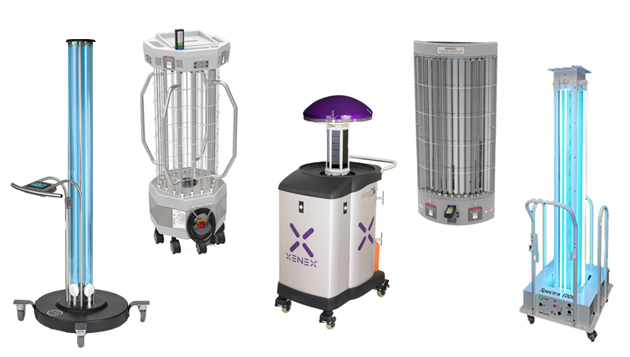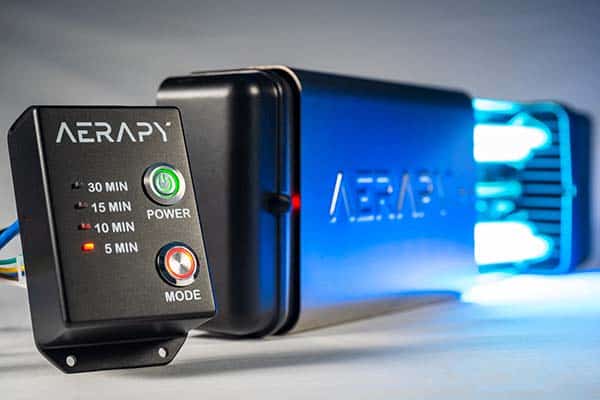UV Surface Disinfection Techniques: Taking Full Advantage Of Efficiency for Germ-Free Spaces
UV Surface Disinfection Techniques: Taking Full Advantage Of Efficiency for Germ-Free Spaces
Blog Article
UV Disinfection: The Cutting-Edge Technology Changing Hygiene Practices
In the world of hygiene practices, one modern technology has become a game-changer: UV disinfection. With its capacity to eliminate harmful pathogens, this cutting-edge modern technology is changing the means we approach cleanliness and health. Yet exactly how does UV disinfection job, and what are the benefits it provides? From health care setups to food handling, UV disinfection is making its mark in different markets. In this discussion, we will certainly discover the ins and outs of this transformative innovation and expect its appealing future.
Exactly How UV Disinfection Functions
UV disinfection works by utilizing ultraviolet light to ruin or inactivate microorganisms, providing a chemical-free and extremely effective technique of sanitation. This modern technology utilizes the power of short-wavelength UV-C light, which can harming the DNA and RNA of bacteria, therefore rendering them incapable to reproduce and cause damage.
The process begins with the installment of UV sanitation systems, which are composed of UV lights that send out UV-C light. These lights are tactically positioned in areas where microbial contamination is an issue, such as water therapy plants, hospitals, labs, and food handling centers.
When microorganisms are subjected to UV-C light, the photons permeate their cell wall surfaces and get to the DNA and RNA within. The high-energy UV-C photons disrupt the hereditary material by creating bonds in between nearby nucleotides, causing the formation of thymine dimers. These dimers avoid the microorganisms from reproducing, providing them safe.
UV sanitation is highly effective against a vast array of bacteria, consisting of parasites, bacteria, and infections. It is particularly effective against waterborne pathogens like E. coli, Giardia, and Cryptosporidium. In addition, UV disinfection is a chemical-free method, getting rid of the demand for potentially harmful disinfectants and reducing the danger of damaging disinfection by-products.
Benefits of UV Sanitation
UV sanitation uses many benefits in the area of sanitation, making it a highly favored method for properly removing unsafe microbes. Among the key advantages of UV disinfection is its capacity to give a chemical-free option. Unlike conventional disinfection approaches that count on chemicals, UV disinfection uses ultraviolet light to damage the DNA of bacteria, rendering them incapable to recreate and cause infections. This not just eliminates the demand for potentially damaging chemicals but additionally minimizes the danger of chemical deposit on surfaces.

UV disinfection is likewise extremely functional in its applications. It can be made use of in numerous setups, consisting of hospitals, schools, food processing centers, and water therapy plants. UV sanitation systems can be conveniently incorporated into existing cleanliness methods, giving an additional layer of protection against contagious illness.
In enhancement to its efficiency and flexibility, UV disinfection is also eco pleasant. It does not create any kind of unsafe byproducts or residues, making it a secure and lasting technique for cleanliness - uv surface disinfection. UV sanitation requires minimal upkeep and has a long life-span, resulting in expense savings in the lengthy run.
UV Disinfection in Medical Care Setups
In health care setups, UV disinfection has actually emerged as a groundbreaking technique for effectively getting rid of harmful bacteria. UV sanitation functions by sending out ultraviolet light at a particular wavelength that is lethal to germs, viruses, and various other microorganisms.
First of all, UV sanitation is a non-chemical method, making it an eco-friendly alternative compared to conventional disinfection techniques that often include using extreme chemicals. The usage of UV light eliminates the need for chemical disinfectants, reducing the danger why not try these out of unsafe deposit or chemical direct exposure to both patients and healthcare employees.
Additionally, UV disinfection is highly efficient in killing a wide variety of bacteria, consisting of drug-resistant microorganisms such as MRSA and C. difficile. It gives a dependable and constant sanitation procedure, making sure that all surface areas and equipment are completely sanitized, also in hard-to-reach locations.
UV Sanitation in Food Processing
The application of UV disinfection expands past health care settings and locates considerable value in the world of food handling. uv surface disinfection. UV disinfection innovation is becoming progressively popular in the food industry as a result of its ability to efficiently remove dangerous virus and enhance food safety
Among the primary benefits of UV disinfection in food processing is its capability to target a large range of bacteria, including molds, infections, and microorganisms. By using UV light at particular wavelengths, it is possible to interrupt the DNA and RNA of these virus, providing them incapable to create or reproduce harm. This technology can be used to numerous phases of the food handling chain, consisting of surface area sanitation, equipment sanitation, and water therapy.
UV disinfection supplies a chemical-free and non-thermal method of sanitizing food. Unlike typical sanitation methods that rely on chemicals or warmth, UV innovation does not leave any kind of residue or change the preference, appearance, or nutritional worth of the food. This makes it an ideal solution for sectors that need stringent adherence to high quality criteria.
Moreover, UV sanitation systems are simple to install and run, requiring minimal maintenance. They can be incorporated into existing processing lines without creating considerable disruptions to the production process. Additionally, UV systems have a quick treatment time, permitting constant processing and minimizing downtime.
The Future of UV Disinfection

One area where UV sanitation is expected to make considerable developments remains in the field of healthcare. With the surge of antibiotic-resistant germs and the requirement for much more efficient disinfection techniques, UV light has the potential to play a critical duty in lowering healthcare-associated infections. UV sanitation systems can be made use of to sanitize surface areas, equipment, and even the air in medical care facilities, aiding to stop the spread of dangerous virus and boost patient safety.
Another industry that can profit from advancements in UV sanitation technology is the food industry. UV light has actually currently confirmed to be a reliable approach see post for sanitizing food items and minimizing the danger of foodborne health problems. As modern technology improves, we can expect to see more cost-effective and reliable UV sanitation systems being executed in food handling plants, ensuring that the food we eat is secure and without unsafe germs.
Verdict
Finally, UV click this link disinfection is an innovative technology that is changing sanitation methods in health care setups and food processing. By utilizing UV light to kill or shut off microorganisms, it uses countless advantages such as performance, effectiveness, and safety and security. With continuous developments in this area, UV disinfection holds fantastic possible for the future of sanitation, supplying a reputable and lasting solution for preserving tidy and sanitary environments.
UV sanitation is a chemical-free approach, eliminating the requirement for possibly unsafe anti-bacterials and minimizing the threat of damaging disinfection spin-offs.
Unlike traditional disinfection approaches that rely on chemicals, UV sanitation uses ultraviolet light to ruin the DNA of microbes, rendering them unable to replicate and create infections. Unlike typical disinfection methods that depend on chemicals or warm, UV modern technology does not leave any residue or alter the taste, structure, or dietary value of the food. As technology boosts, we can anticipate to see extra affordable and reliable UV sanitation systems being executed in food processing plants, making certain that the food we consume is safe and cost-free from dangerous bacteria.
In verdict, UV sanitation is a cutting-edge technology that is transforming sanitation practices in healthcare setups and food processing.
Report this page